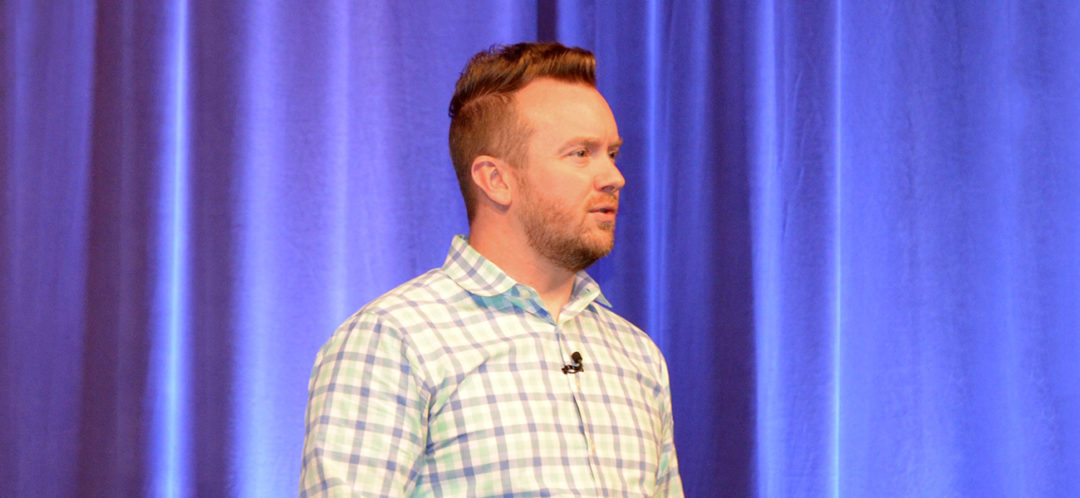
Identify and eliminate self-limiting beliefs
Focus on becoming more creative, adaptive, and resilient.
Viewing your life circumstances as a collection of opportunities and obstacles, rather than concrete limitations, is critical to recognizing your capabilities and finding happiness. So says Phil Hansen, an artist who has continued to blossom after overcoming a potentially career-ending tremor in his dominant hand.
“The key to changing the way we think about limitations lies in making the distinction between what qualifies as a limitation, and what is a self-limiting belief,” says Hansen, who delivered his "Embrace the Shake" message at the CUNA Lending Council Conference.
Making that distinction is important at both the individual and organizational level, says Hansen, as credit unions often face competitive disadvantages they must address to survive and thrive.
A limitation, Hansen says, is something that’s been put in our way. A self-limiting belief is something that we put in our own way, that blocks all paths and doesn’t allow for possibilities.
You can most easily recognize this polar dynamic in a group setting, he notes. Think about a presentation during a meeting in which someone poses a new challenge. Inevitably, some people are quick to shift gears and generate potential solutions. Meantime, others feel overwhelmed and can’t progress because the situation isn’t going exactly as planned.
“You’ve got two people in the exact same situation having a completely different experience,” Hansen says.
Everyone has self-limiting beliefs of some type. For Hansen, it was the belief that “if my hand shakes, I can’t do art.” How can you alter your outlook? "By asking the right questions, these limitations can become a pathway to creativity,” he says.
Hansen asked himself, “How can I do art with a shaky hand?” He compensated for his limitation by training himself to paint and write differently, opening the realm of possibilities to include different mediums, new tools, and crowdfunded creativity.
For “Mona Greasa,” he squished greasy fast-food hamburgers against a backdrop to create a replica of Leonardo da Vinci’s famous painting. He created biodegradable art by tattooing fruit. He smashed old vinyl records and arranged the pieces on the floor to look like Bob Marley. He created portraits of poets with a typewriter, strategically placing letters from their poems on the page.
“It’s the challenging times that give us far more potential for success, to stand out from competitors,” Hansen says. “There are people who achieve success every day despite—and often because of—a lack of resources.”
For example:
- Apple started in a garage. Steve Jobs and Steve Wozniak needed to borrow money to buy the components for their first 50 computers.
- Starbucks traces its roots to three people—a history teacher, an English teacher, and a writer—who each chipped in $1,500 to launch the venture.
- eBay’s first auction item was a broken laser pointer, oddly enough, but soon more useful items flooded into the marketplace. Founder Pierre Omidyar began making more money off commission from sales than from his day job. He became a billionaire at age 31 when eBay went public in 1998.
“There’s not a future we’re supposed to have—there’s a future we create by reframing and recrafting,” Hansen says.
So, change your attitude toward yourself. Focus on becoming more creative, adaptive, and resilient. Challenge accepted norms and rethink the way you’ve always operated.
“Instead of telling each other to seize the day, remind ourselves every day to ‘seize the limitation,’” Hansen says.
►Read more conference coverage from CUNA News, and get live updates on Twitter via @CUNAJennifer, @AdamMertzCUNA, @cumagazine, @CUNACouncils, and by using the #LendingCouncil hashtag. Learn more about the CUNA Lending Council, a member-led professional society for credit union executives, by visiting cunacouncils.org.